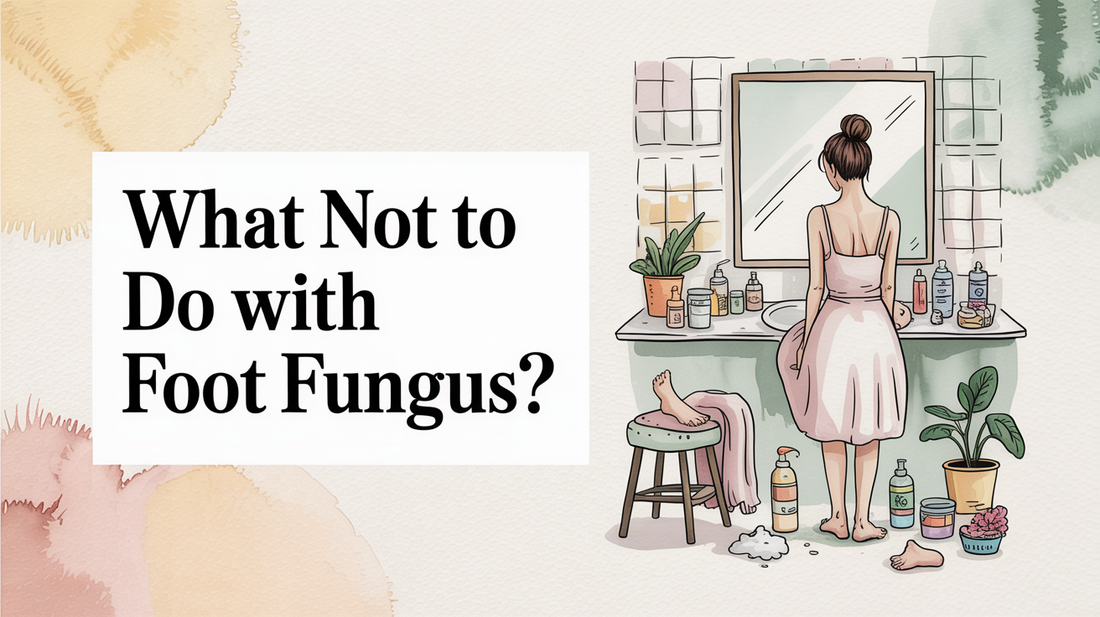What not to do with foot fungus?
Common treatment mistakes, barefoot in locker rooms, sharing towels risk — If you're dealing with foot fungus, recognizing what not to do is crucial. Many individuals unknowingly make common treatment mistakes that can worsen their condition. Activities like going barefoot in locker rooms or sharing towels can introduce or spread fungus. This blog will guide you through three key sections to help you understand and take action today.
Habits That Keep You Infected 🧭
Everyday habits can create the perfect environment for fungal infections to thrive. For instance, walking barefoot in public areas like locker rooms, pools, and communal showers can expose your feet to fungi that flourish in warm, moist conditions. Sharing personal items such as towels, socks, or shoes can also transfer fungal spores, leading to reinfection. Furthermore, wearing the same shoes day after day without letting them dry can trap moisture, contributing to a damp environment that fungi love.
It's also important to pay attention to your footwear. If you keep your feet in sweaty, non-breathable shoes, especially those made from synthetic materials, you're setting the stage for fungal growth. Moreover, ignoring basic foot hygiene by not washing and thoroughly drying your feet—especially between the toes—can allow fungi to take hold.
- Always wear shoes in public areas like locker rooms or pools.
- Never share personal items like towels or nail clippers.
- Rotate your shoes daily to allow them to dry out completely.
- Choose breathable footwear to keep your feet dry.
- Wash and dry your feet daily, paying special attention to the areas between your toes.
Try It Tonight: Calm, Fresh Feet ✨
- Wash feet with warm water and mild cleanser; dry thoroughly between toes.
- Apply a small amount of Kissable Feet where needed; massage until absorbed.
- Let skin breathe; slip on breathable socks if desired. Patch-test first if you’re new to this foot cream.
DIY Hacks to Skip ✨
While DIY remedies can be tempting, many of them can do more harm than good. For example, using undiluted bleach or harsh chemicals might lead to chemical burns without effectively treating the infection. Similarly, applying random household items like toothpaste or vinegar without proper guidance can worsen the situation. Cutting or filing infected nails aggressively can spread the infection and create additional wounds, and using expired medications may lead to allergic reactions.
Instead of suffocating the fungus with petroleum jelly or other occlusive products, which only trap moisture, it’s better to seek out safe and effective treatments. Avoid these DIY hacks to protect your feet and promote healing.
- Don't use bleach or harsh chemicals on your feet.
- Avoid household items like toothpaste or vinegar for treatment.
- Refrain from aggressive nail trimming or filing.
- Check expiration dates on over-the-counter medications.
- Skip occlusive products that trap moisture.
Why We Recommend a Gentle Helper 🌿
Kissable Feet is designed for quick absorption without a greasy residue. The calming, nurse-crafted blend of tea tree, coconut, and calendula is intended to soothe your feet and fit seamlessly into your nightly routine.
- Fast-absorbing comfort—non-greasy finish.
- Gentle sensation suited for sensitive, overworked feet.
- Clean-leaning, bedtime-friendly scent.
Swap These for Smarter Moves 🔍
Making smarter choices can significantly reduce the chance of fungal infections. For starters, always replace shared towels with personal, clean ones and wash them in hot water after each use to prevent reinfection. Opt for breathable materials like leather or mesh for your shoes, and make a habit of rotating between different pairs to allow them to dry thoroughly. Instead of relying on unproven home remedies, use proper antifungal medications as directed by healthcare providers.
When selecting socks, choose moisture-wicking materials made from synthetic blends or merino wool, as these alternatives are better at keeping your feet dry than regular cotton. Lastly, consider applying protective barrier creams or antifungal powders to clean, dry feet as a preventative measure.
- Use personal towels and wash after every use.
- Choose breathable shoes and rotate pairs.
- Follow healthcare providers' advice on antifungal medications.
- Wear moisture-wicking socks to keep feet dry.
- Apply antifungal powders or creams for added protection.

